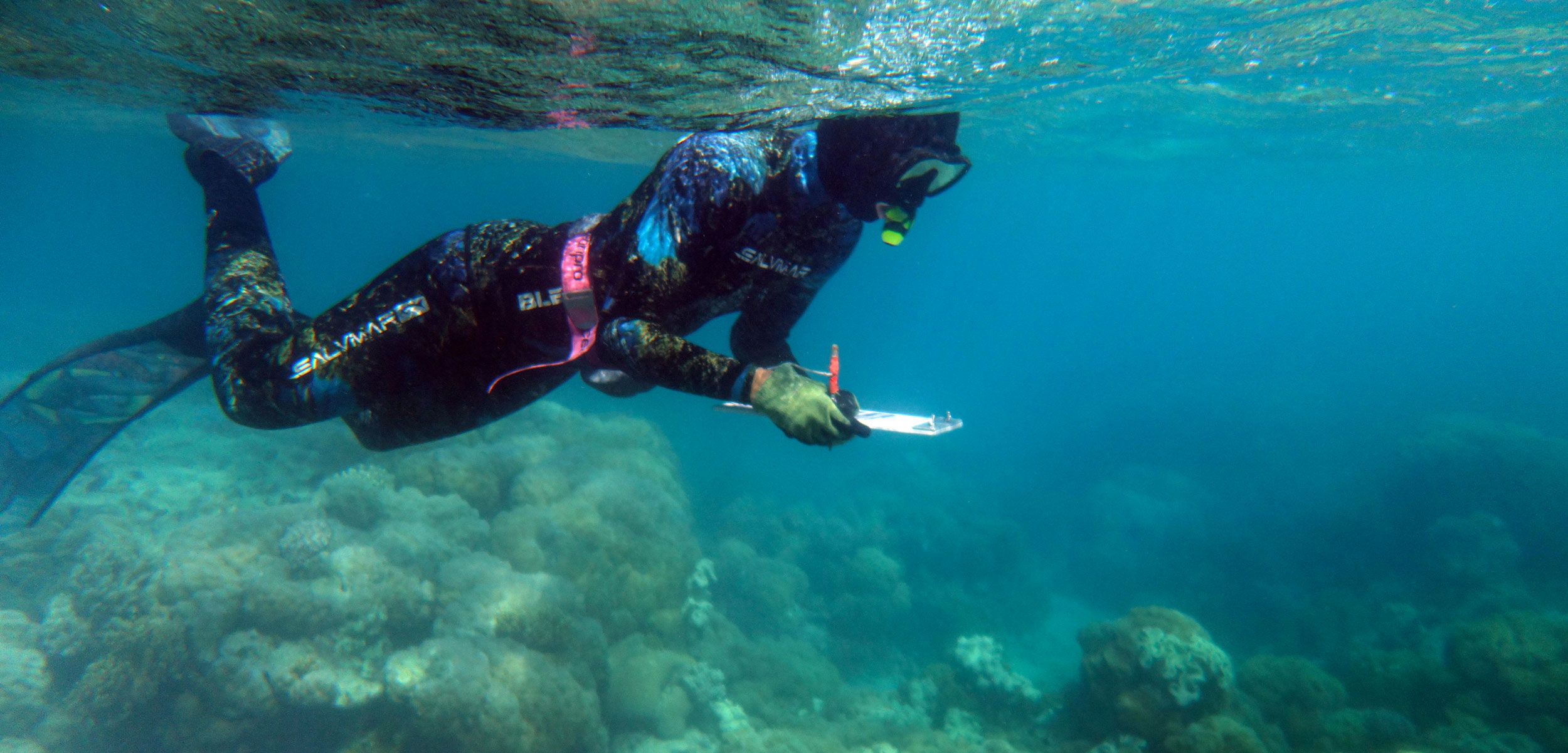Can a Cold Water Bath Save the Great Barrier Reef?
Lack of action on climate change is forcing scientists to devise ever more elaborate ways to stave off the damage.
Article body copy
In early 2020, Australia was in the grip of its second hottest summer on record. As catastrophic bush fires turned the sky black, sea temperatures on the Great Barrier Reef soared above 29 °C, causing more than a quarter of the corals on the reef to turn a ghostly white. It was the third mass coral bleaching event to hit the UNESCO World Heritage Site in just five years.
In light of the ever-increasing concentration of carbon dioxide in the atmosphere and rising ocean temperatures, scientists are scrambling to find ways to halt the reef’s rapid decline, from artificially brightening clouds to reflect more sunlight, to bolstering coral populations using in vitro fertilization.
Another possible strategy, explored in a new study, involves transporting cooled seawater to the reef and dousing the struggling corals to guard them against overheating. While the study shows that the idea works in theory, the authors caution that this respite would come with enormous economic and environmental costs.
“Cool-water injection has been investigated by others on small sections of reefs,” says Mark Baird, an aquatic scientist at the Australian government’s Commonwealth Scientific and Industrial Research Organisation. “It’s appealing because it directly addresses the problem of warm water at the seabed, which causes bleaching.”
To explore whether the idea could be applied to the world’s largest coral reef system, Baird and his team used computer models to simulate 19 sites on the Great Barrier Reef during a 2016–17 bleaching event.
The team analyzed tidal patterns and currents to determine the best conditions for the technique to be effective. Their calculations showed that the approach would have the highest chance of success at Lizard Island in Far North Queensland, as the oceanographic conditions would help the pumped seawater remain on the reef.
The researchers estimated that pumping water cooled to 27 °C—1 °C cooler than the average temperature on the reef—through four pipes at a rate of five cubic meters per second could cool 97 hectares of reef by at least 0.15 °C, which would be enough to ward off record-breaking sea temperatures and prevent bleaching.
But the energy costs involved in such a task would be gargantuan. To keep just the Lizard Island reef—just one of the 3,100 reefs on the Great Barrier Reef—cool over the summer would cost around US $3.9-million in energy alone. Given that 79 percent of Australia’s energy is derived from fossil fuels, producing this much power would further contribute to the warming that causes coral bleaching in the first place.
Baird says the result highlights the need to weigh the risks and benefits before applying geoengineering techniques to the real world.
“Widespread interventions will need to be optimized to increase benefits and reduce costs,” he says. “They will also need a high level of community support.”
The reef cooling technique was one of 160 interventions investigated by the Australian government during a $4.6-million feasibility study. A consortium of researchers working under the Reef Restoration and Adaptation Program aims to help restore the Great Barrier Reef and protect it from the effects of climate change.
In April 2020, the government announced that it will invest a further $116-million to test and develop the most promising interventions identified by the initial two-year study. Among the 43 methods selected from the feasibility study are spraying tiny saltwater droplets into clouds to reflect sunlight, repairing damaged parts of the reef with 3D-printed structures, and creating nanosized water bubbles to shade vulnerable corals.
While novel, such interventions are futile if the underlying cause of the Great Barrier Reef’s deterioration is not addressed, says Terry Hughes, director of the Australian Research Council Centre of Excellence for Coral Reef Studies.
“The first step in any restoration project should always be to remove the causes of environmental decline—otherwise, history will repeat itself,” says Hughes, who was not involved in Baird’s study.
“Governments and many industries often want to be seen to be doing something to allay public concern over the decline of reefs, even if their support for restoration projects is a smokescreen for inaction on climate change,” Hughes says.
While geoengineering and restoration efforts cannot reverse all the effects of human-induced climate change, Baird says he would prefer to implement a well-designed intervention than see the reef degrade further.
“My hope is that these interventions can improve the health of the corals so that future generations can experience a less-impacted reef,” he says. “Even this is a huge challenge.”

